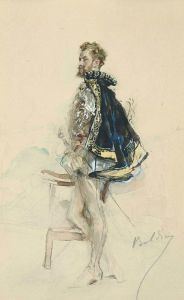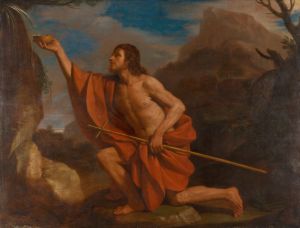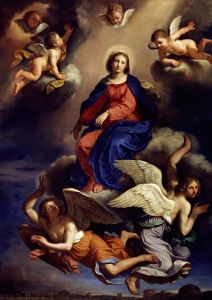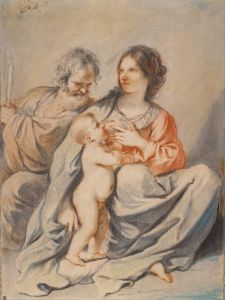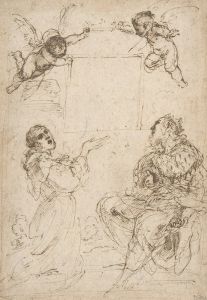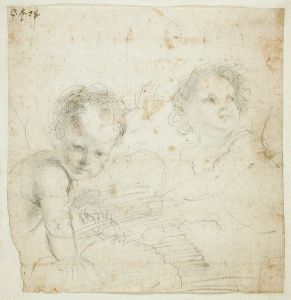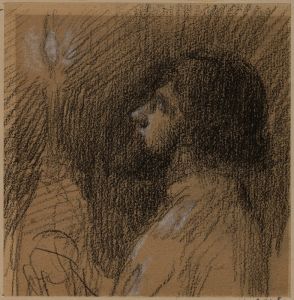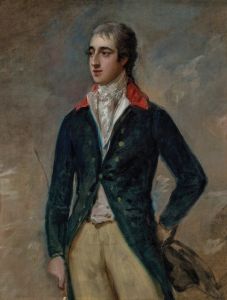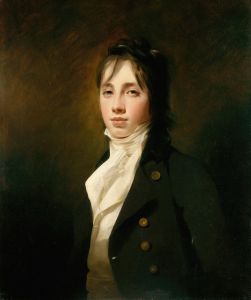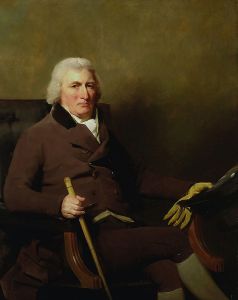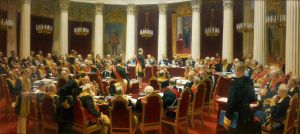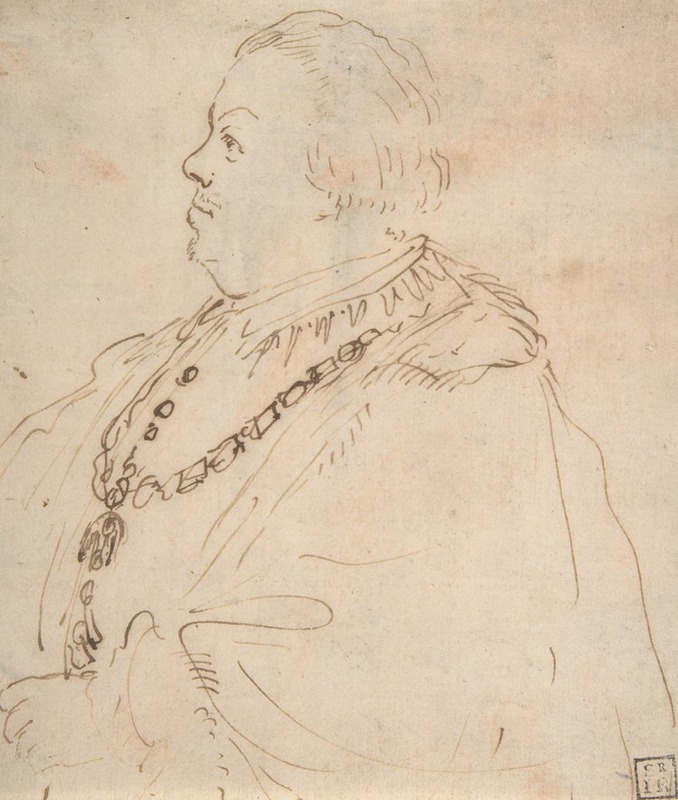
Waist-Length Portrait of a Man Wearing the Order of the Golden Fleece, in Profile Facing Left
A hand-painted replica of Guercino’s masterpiece Waist-Length Portrait of a Man Wearing the Order of the Golden Fleece, in Profile Facing Left, meticulously crafted by professional artists to capture the true essence of the original. Each piece is created with museum-quality canvas and rare mineral pigments, carefully painted by experienced artists with delicate brushstrokes and rich, layered colors to perfectly recreate the texture of the original artwork. Unlike machine-printed reproductions, this hand-painted version brings the painting to life, infused with the artist’s emotions and skill in every stroke. Whether for personal collection or home decoration, it instantly elevates the artistic atmosphere of any space.
"Waist-Length Portrait of a Man Wearing the Order of the Golden Fleece, in Profile Facing Left" is a painting attributed to the Italian Baroque artist Giovanni Francesco Barbieri, commonly known as Guercino (1591–1666). Guercino was a prominent painter of the Baroque period, known for his dynamic compositions, dramatic use of light and shadow, and expressive figures.
This particular work depicts a man shown in profile, facing left, wearing the prestigious Order of the Golden Fleece. The Order of the Golden Fleece, established in 1430 by Philip the Good, Duke of Burgundy, was one of the most distinguished chivalric orders in Europe. Membership was traditionally reserved for nobility and individuals of high status, suggesting that the subject of the portrait was a person of considerable importance. The sitter's identity, however, remains unknown, as there is no definitive documentation linking the painting to a specific individual.
The portrait is executed in oil on canvas and showcases Guercino's mastery of portraiture. The artist's attention to detail is evident in the rendering of the sitter's features, the texture of the clothing, and the depiction of the Golden Fleece insignia. The use of profile view, a format often associated with classical portraiture and coinage, lends the work a sense of timeless dignity and formality.
Guercino's style during this period was characterized by a combination of naturalism and idealization, influenced by both the Carracci school and Caravaggio. The painting reflects these influences, with its realistic portrayal of the sitter's face and the subtle interplay of light and shadow that gives the figure a three-dimensional presence.
The provenance of the painting is not extensively documented, and its current location is not specified in available sources. As with many works from this era, questions about its history and ownership remain unanswered. Nonetheless, the painting is recognized as an example of Guercino's skill in capturing the character and status of his subjects.
Given the lack of detailed historical records about this specific work, much of its context, including the identity of the sitter and the circumstances of its commission, remains unclear. However, it stands as a testament to Guercino's artistic talent and his ability to convey both individuality and social stature through portraiture.





